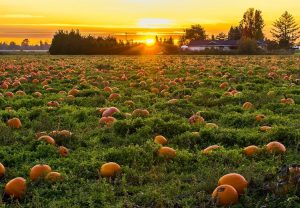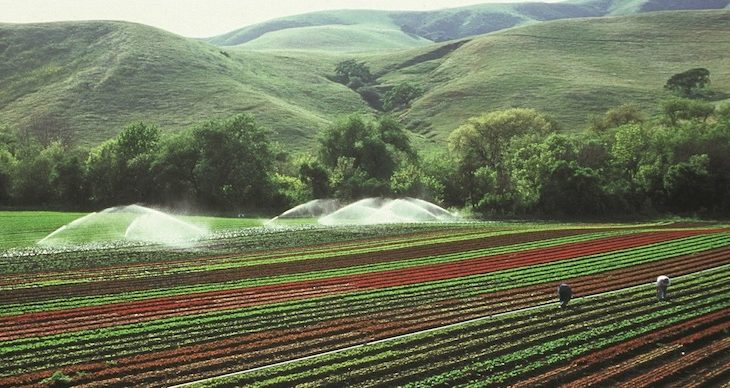Kelsey Voss, New Science Communicator
Freshwater: The most important resource of our fast-growing world. We need it to drink and to grow food.
We use water for drinking, washing, industrial processes, natural resources, and growing food, but our water supply is dwindling. In recent decades, we have seen increasing declines in freshwater levels across the world, along with threats to supplies, even here in British Columbia.
Globally, the glaciers that feed our rivers are shrinking. Aquifer levels are declining without being replenished or are experiencing contamination. With our valuable water levels and water quality at risk, how will we grow more food with less freshwater?
Where surface water is unavailable or too costly to develop, groundwater supplies the perfect water source.
Dr. Diana Allen, a groundwater researcher at Simon Fraser University, is leading research projects in southwest BC to understand groundwater-security issues for communities.
“Water security and food security are inextricably linked,” Allen said in an interview with the Vancouver Sun in 2013, “And the resources that are available in our most productive agricultural areas are already showing signs of water stress.”
Groundwater use

British Columbia’s south coast region include prime agricultural land but has experienced both reduced aquifer levels and contaminated groundwater in recent years. Photo by James Wheeler, Pixabay CC0
Groundwater, simply put, is water that is in the ground. Groundwater is so useful, it contributes 30 per cent to the world’s total freshwater supply and supplies drinking water to about 11 million people in Canada.
Farmers extract water from aquifers. The water in these aquifers is held within pore spaces in rocks. When water is pumped out for usage, part of the aquifer is drained. The addition of new water by rainfall is then needed to replenish an aquifer. If water is pumped out faster than it is being replenished, this unsustainable practice could lead to the aquifer drying up.
The replenishmentprocess helps to keep water levels high enough to support communities and farmland. Because we need groundwater to produce much of the world’s food, decreased aquifer levels could make it harder to grow enough food.
Furthermore, in many regions, communities rely solely on groundwater. For example, BC’s Gulf Islands depend on each island’s aquifer for irrigation, recreation, and drinking water. The future of these island communities rests on their access to water.
Dr. Allen is studying many of these coastal BC aquifers to determine how their water levels respond to regional climate and environmental pressures.
Groundwater’s importance
In Canada, where surface freshwater seems abundant, it is easy to underestimate how important groundwater is. In areas where surface water is scarce, groundwater fully supports communities and farms. In BC, for example, 15 per cent of aquifer water levels are showing a moderate to large rate of decline – occurring primarily in the southwest where most of the province’s population lives.
Groundwater can have a much higher residence time than all other water sources. Residency refers to how much time water stays in one storage space. To put this into perspective, water residency in rivers is approximately two weeks; in lakes, it is about 10 years, and in glaciers, it ranges from 10 to 1,000 years.
In contrast, groundwater’s residency ranges from two weeks up to 10,000 years. “The age of two deep groundwater samples on the Gulf Islands were estimated to be 2,000 to 4,000 years old,” Allen says.
Groundwater’s vulnerability to climate

“Water security and food security are inextricably linked, and the resources that are available in our most productive agricultural areas are already showing signs of water stress.” Photo via Pixabay CC0
Changes to local climates are pressuring groundwater levels, especially on the BC coast. Rainstorms coming off the coast are increasing every year because of warming sea temperatures. Instead of gradual rainfall over time, rain is now more intense over a shorter time.
When rain intensifies, soil cannot accept water as fast as it is falling so less water seeps into the ground. Most agriculture in Metro Vancouver relies on aquifers, but these changing local climate patterns mean the area could be experiencing longer periods of drought in the future.
Groundwater contamination is another consequence of storms. Storm water sweeps up waste, salt, and fertilizers. This not only causes eutrophication in surface water, but can also cause destructively high levels of nutrients in groundwater as well. When freshwater is contaminated, it can no longer be used for farming or drinking.
In coastal regions, such as BC’s Gulf Islands, salt is also contaminating coastal aquifers do to over pumping vulnerable areas. Salty water cannot be used for drinking or agriculture.
Dr. Allen is investigating how climate is affecting these coastal aquifers, with the goal of helping local communities better manage and sustain their groundwater resources. Her climate change impact assessments model the aquifers’ water levels based on past and present data. By modelling water levels under scenarios of projected climate change, the future of the communities’ water sustainability can be better predicted and managed.
What does this mean for our communities, and can we change it?
The less freshwater we have, the less water we have to grow food, and the more focus we need to put on sustainability.
Being conscious about how we use water and how much we use is an important first step. Other steps each of us can take include reducing our shower times and eating foods that have a lower water footprint. Some BC communities implement water restrictions annually to reduce non-essential water use.
In terms of agriculture and urban design, larger prevention methods are needed to maintain water security under climate change. For example, storm water–holding ponds, swales and other systems need to be designed into infrastructure to slow and store storm water, allowing it time to seep into the ground. Many BC communities are beginning to apply storm water management plans that include such systems.
Although there may be no grand solution as climate-change pressures on groundwater continue to grow, it is important that we conserve as much water as we can while we can. Only by doing that will we secure food production, drinking water, and groundwater-dependent communities into the future.
~30~
Read more about Dr. Allen’s research>
Simon Fraser University student Kelsey Voss wrote this post as part of Science Borealis’s Spring 2019 Pitch & Polish, a mentorship program that pairs students with one of our experienced editors to produce a polished piece of science writing.
Read more about Pitch and Polish>




